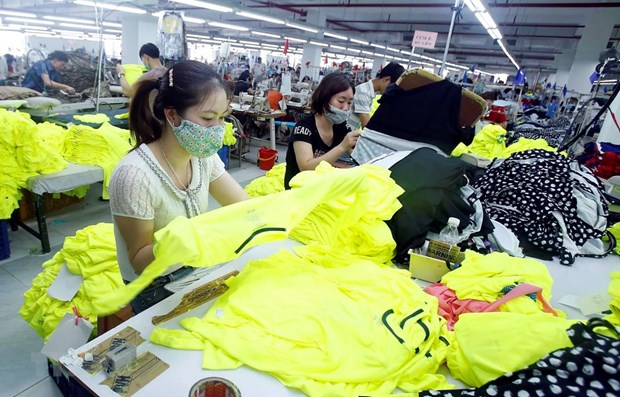 |
|
|
Economist Ngo Tri Long said China - Vietnam’s largest market - has begun to contain the COVID-19 pandemic and Vietnam’s Ministry of Industry and Trade has worked to remove obstacles to trade at border gates with China that have huge demand for food and fruit and vegetables.
This represents a great opportunity for Vietnam to step up exports to its northern neighbour, he said.
Customs figures show that in the first quarter of this year, Vietnam’s export to China reached 9.3 billion USD, up 22.8 percent year-on-year and making up 14.8 percent of its total export value.
Experts have suggested putting in place measures to support businesses in the two countries as soon as possible, thus promoting bilateral trade and investment ties.
The EVFTA, set to come into force in July, is expected to help boost Vietnam’s production and exports.
If the EU can bring COVID-19 under control in the second quarter and resume production in the third and fourth, the agreement will open the door for sought-after Vietnamese goods like garments and textiles, footwear, timber products, phones, and electric components to enter the market.
Figures from the General Statistics Office (GSO) reveal that Vietnam’s total export revenue in the first quarter was 59.08 billion USD, up just 0.5 percent, while imports totalled 56.26 billion USD, down 19 percent.
The country therefore posted a trade surplus of 2.8 billion USD compared to the 1.5 billion USD in the first quarter of last year.
According to Bui Trong Tu, Deputy Director of the Department of Trade and Services Statistics at the GSO, most of the orders for Vietnam from the US and the EU have been suspended due to the pandemic.
Many major importers from the two markets have suggested Vietnamese garment and textile as well as leather and footwear exporters suspend the handover of goods and the signing of new contracts, or perhaps even cancel them.
The number of orders for those kinds of products from the US and the EU are forecast to fall sharply in April and May.
According to Dien Quang Hiep, President of the Binh Duong Furniture Association (BIFA), most of its members have faced difficulties in the two markets.
Meanwhile, Vietnam’s exports to Southeast Asia hit 6.3 billion USD, a year-on-year rise of 0.99 percent and accounting for 10 percent of the country’s total export turnover.
Agro-fishery exports to ASEAN expanded 16.5 percent year-on-year to 720.3 million USD.
Vietnam has benefited from the ASEAN Trade in Goods Agreement (ATIGA), which has a zero percent tariff on most of the products.
The presence of Vietnamese banks in markets such as Myanmar, Cambodia, and Laos has also facilitated payments./.

PM allows rice export resumption from May 1
Prime Minister Nguyen Xuan Phuc on April 28 agreed with the Ministry of Industry and Trade’s proposal to resume rice export from May 1, in accordance with Decree 107/2018/ND-CP on rice export business.

Upbeat shrimp exports amid COVID-19
While seafood exports declined sharply in the first quarter due to the COVID-19, shrimp exports have managed to post slight growth.
 Vietnam’s export value is expected to rise in the coming months thanks to China’s increase in imports, strong measures taken by the Vietnamese Government, ministries, agencies, and businesses, and the EU-Vietnam Free Trade Agreement (EVFTA).
Vietnam’s export value is expected to rise in the coming months thanks to China’s increase in imports, strong measures taken by the Vietnamese Government, ministries, agencies, and businesses, and the EU-Vietnam Free Trade Agreement (EVFTA).